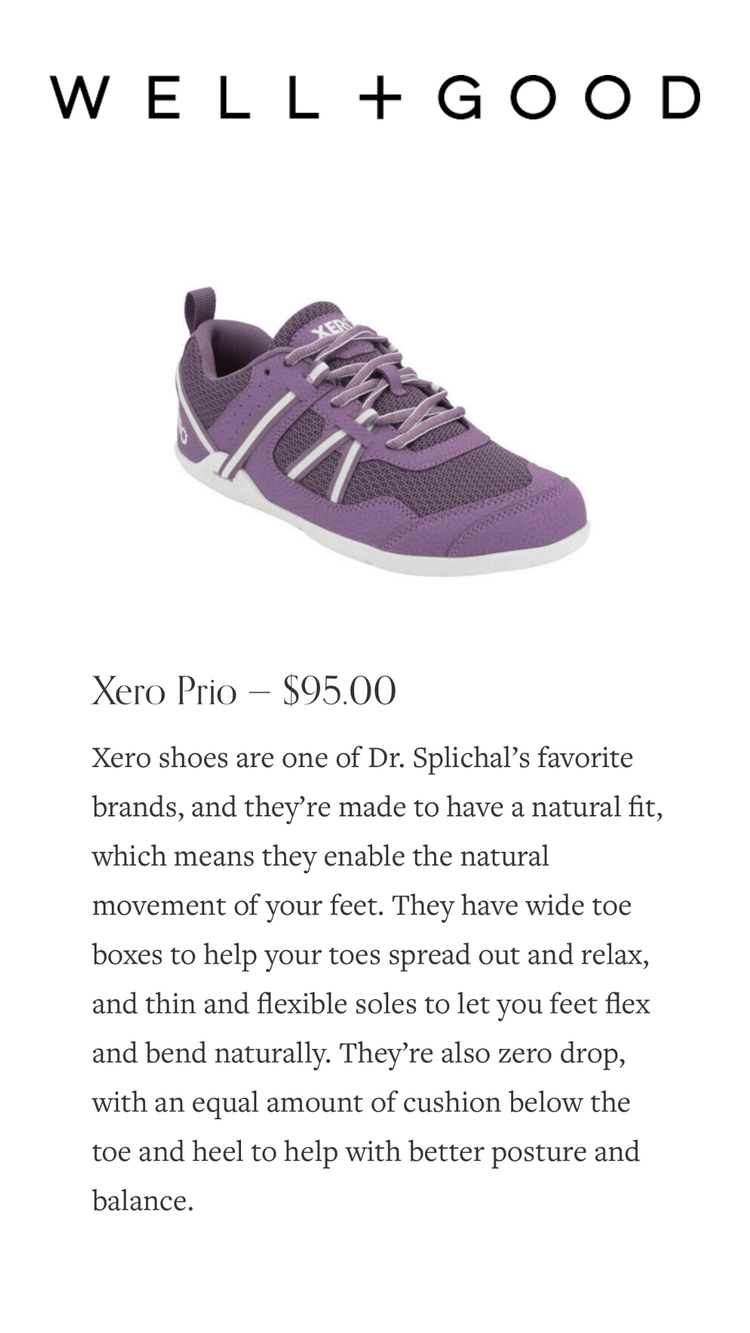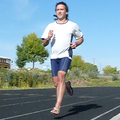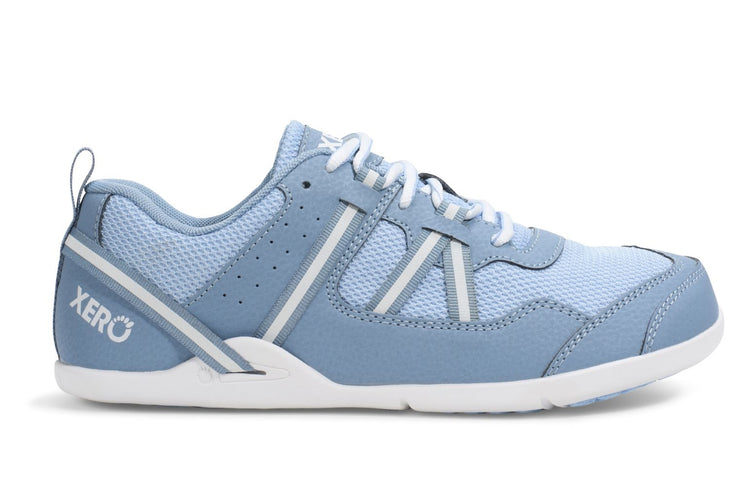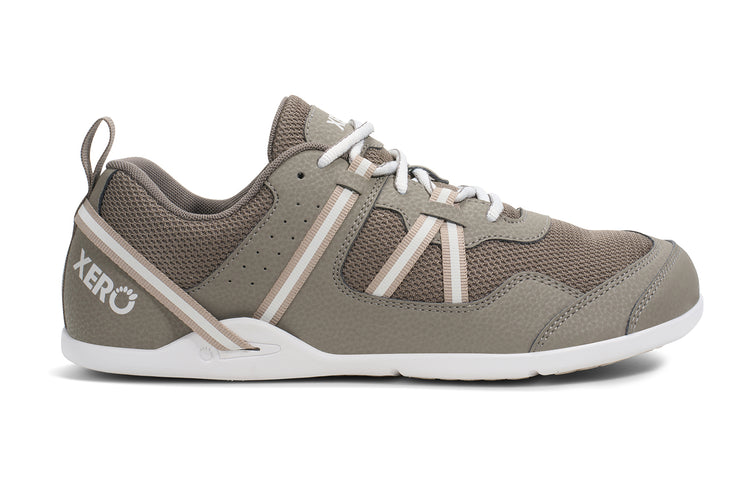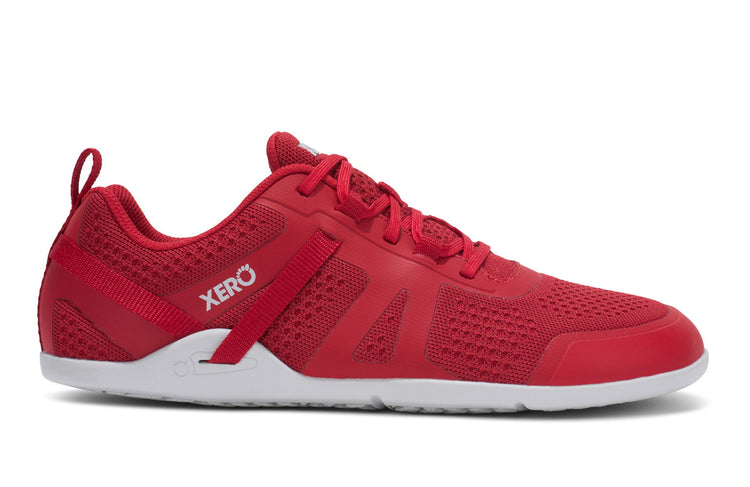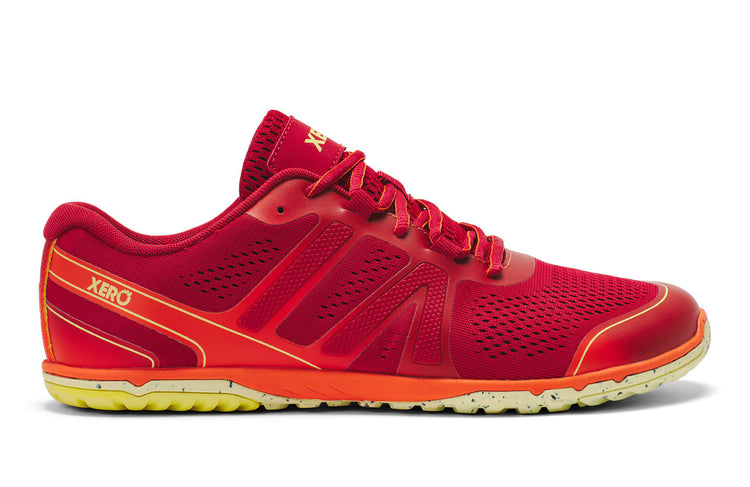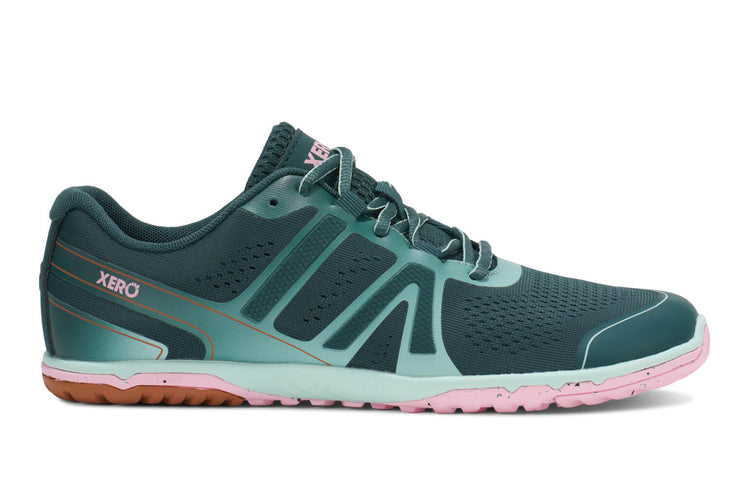latest News
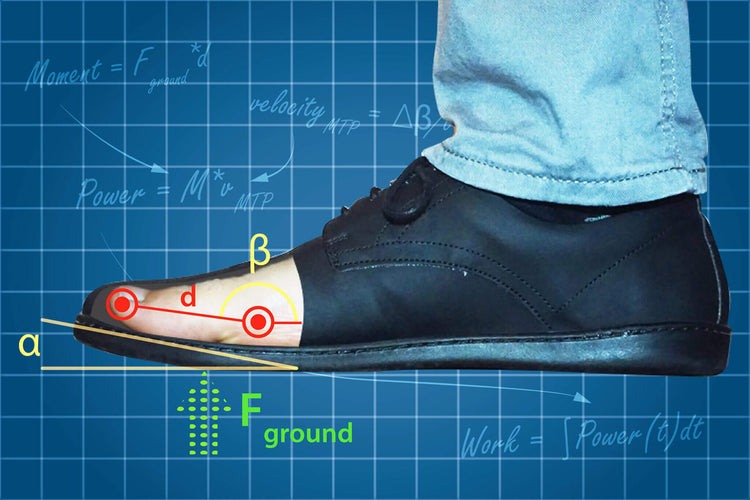
NEW research - Shoes can make you weak and injured
It's time for another episode of "stupid research."Not that the research itself is stupid.But that those of us who understand the value and benefits of natural movement, and how most "normal" shoes get in the way of letting your feet do what's natural, are stunned that people need research to prove something obvious:Using your body naturally is better than restricting it.In this episode, Harvard's Dr. Daniel Lieberman, whose research showing about how barefoot runners put less force through their joints than runners in shoes kicked off the barefoot running boom in 2009, just published a new study about footwear.And the results are not good for "normal" shoes.In this study published in Nature and described on the Harvard website and Lieberman and others examined the effect of "toe spring."Toe spring is the upward curve in a shoe, from the ball of the foot to the tip, that's built into modern athletic shoes and many dress shoes as well.Shoe designers add toe spring to stiff-soled shoes to accommodate the fact that the sole prevents your toes from bending towards your knee as your foot is about to push off the ground.So, what did they discover?In short:By limiting the amount of movement in the foot, the foot gets weaker: “It stands to reason that if the foot muscles have to do less work, then they’re probably going to have less endurance given that many thousands of times a day you push off on your toes,” said Lieberman, the Edwin M. Lerner II Professor of Biological Science and senior author on the paper. The work on toe springs is described in Scientific Reports. The researchers say this potential weakness could make people more susceptible to medical conditions like plantar fasciitis — a common, hard to repair, and painful inflammation of the thick, web-like band of tissue that connects the heel bone to the toes. And this limitation could lead to injuries and medical problems: The researchers say this potential weakness could make people more susceptible to medical conditions like plantar fasciitis — a common, hard to repair, and painful inflammation of the thick, web-like band of tissue that connects the heel bone to the toes. “One of the biggest problems in the world today of people’s feet is plantar fasciitis,” Lieberman said. “We think that what happens is that people are relying on their plantar fascia to do what muscles normally do. When you get weak muscles and the plantar fascia has to do more work, it’s not really evolved for that and so it gets inflamed.”
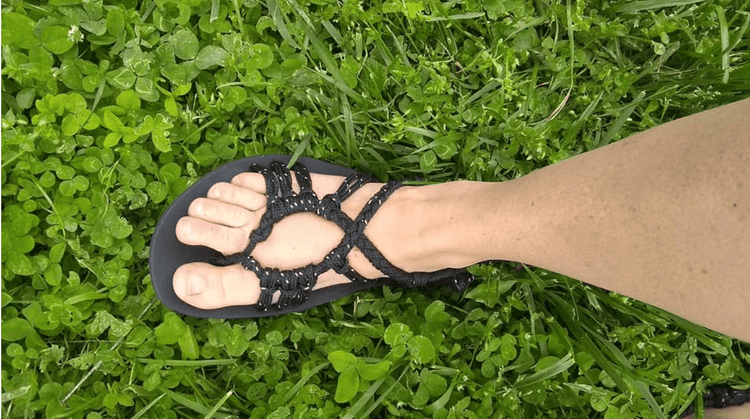
Kelly C's Super Cool DIY Sandal Tying Style
We believe anyone can have the superpower of making their own shoes. Our DIY Kit allows you to cut your footbed and lace away as you wish. However, some of our customers, like Kelly Culp, take it a step further and create extraordinary lace styles like this one, to share with the Xero Shoes world. With these instructions and 10 simple steps, now you can create this stylish masterpiece too, that is simple and takes no time at all but will you make people stop and ask, where did you get those sandals!?*Note: This design takes 3 sets of laces, so get wild with your own personal color scheme!Step One: Punch your holes Once you get your kit in the mail, step on the outsole and mark where your toe hole needs to be for YOU. Then do a double hole punch to pull 2 sets of your laces through.Place three hole punches on either side of your foot as seen in this image. Kelly added an additional hole punch just in front of the arch (seen on the left side of the outsole.) Step Two: Braid your laces (above)Step Three: Create adjustable loopsTake your third set of laces and pull in adjustable loops, the 3 hole punches on the inside of the outsole. Step Four: Fold Laces overFold your laces as seen below so that you can pull the braided laces through in the next step.Step Five: Pull Braided laces through loopsThe loops on the bottom will allow you to adjust the fit when finished. Step Six: Repeat steps 3-5 on the other side of your outsoleStep Seven: Arch Loops and Size AdjustmentsRepeat the process once more, creating loops on both sides of the arch of the foot and pull the braid through. Make final adjustments to your loops so that your feet can slip in comfortably. This is what your sandal should now look like from the top. Feeling those superpowers yet? Good, let’s finish these beauties up. Step Eight: Trim bottom of the laces to about 1/4 of an inch (left). Step Nine: Melt the ends with a lighter/candle and flatten with the backside of the pliers.Step Ten: This is it! Your last step! Just use a square knot technique to create a slide closure (below, Left). Your final knot should look like the below, right image.If your knot looks like this, cheers, you’ve just successfully tied off a square knot and completed Kelly C.'s tying design.Tag us on Instagram if you try this lacing style. And if you come up with cool, new tying ideas, be sure to put them on our Tying Page
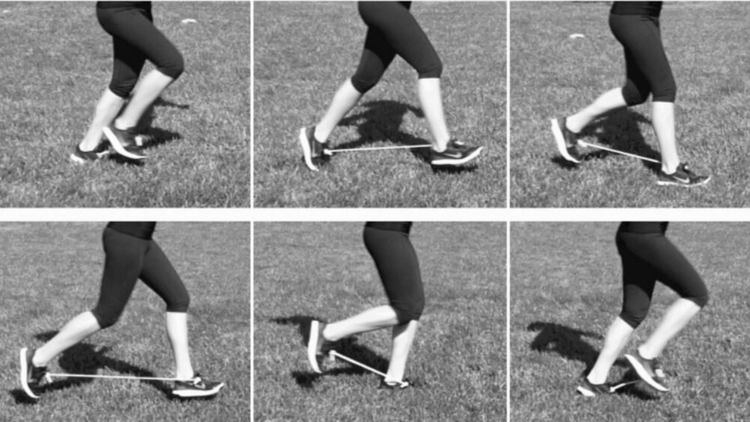
A Rubber Band is the Secret to Better Running?
Could a new form of foot binding be the secret to better running?I don't mean wrapping up your feet in the infamous style of ancient China, but something developed by some mechanical engineers at the University of California, Santa Barbara.In short, they attached some rubber tubing between runners shoes and found that they ran more efficiently.Every stride, you slow your body down and speed it back up again," losing energy that could otherwise be conserved or put into running faster, said Elliot Hawkes, who was a postdoctoral fellow at Stanford when the research was conducted. "90 percent of the energy you put into running is wasted, in a sense.The solution to this, according to the researchers?Tie the legs together with a rubber band. Adding that band between a runner's legs could help slow both legs when they are far apart, then give them a little kick as they came back together--saving energy at both ends.While they didn't publish images of runners who weren't using the rubber tubing, here's what they showed for runners who used what they call an "exotendon":What was the effect?An improvement in VO2 Max (what many people think of as running efficiency) by an average of 6.4%Sounds amazing right?But before you go out and buy an exotendon, let's take a look at what's REALLY going on here.Can you see what the rubber band does?Start by looking at the middle image in the top row, above.You can see that the runner is about to land on their heel, with the foot relatively far in front of their body. This is a typical "overstriding and heel strike" pattern.When you run like this, every time your foot hits the ground that far in front of you, you're basically putting on the brakes. And when you land on your heel like that, research shows that you're sending force into your joints rather than using your muscles, ligaments and tendons naturally -- as built-in springs and shock absorbers.Now look at the far right image in the top row.The runners foot doesn't actually land as far in front, or as much on the heel, as it would if it weren't being pulled back by the rubber band.You can see in the bottom row that the runners form has changed and isn't overstriding as much, and is landing in a more mid-foot pattern.Hopefully, I just saved you some money or time. No need to buy or build your own exotendon.What the exotendon is doing is giving the runner a cue to run in the way that most people do when they get out of padded, elevated-heel, motion-controlled shoes!Want the same effect?Simply take the time to adapt to "natural running," by landing with your foot closer to your center of gravity instead of far out in front of you, and land, ideally, on your forefoot (no need to STAY on your forefoot only, let your foot do what's natural and use the springs built into it... your heel can drop to the ground if it feels right to do so).BTW, while many barefoot runners say that either a midfoot or forefoot landing is what you want to do, research from Harvard's Irene Davis shows that impact forces are lower with a forefoot landing than a midfoot one. So if you're a mid-footer now, you may want to experiment with "moving up" to the forefoot.Another thing that the rubber band did for runners: their cadence went up. That is, the number of times their feet hit the ground in a minute increased (without running faster). Obviously, you can do that on your own, too.The researchers say that the exotendon only works when running on flat surfaces. Needless to say, you can use natural movement anywhere, any time, under all conditions.To be fair, I'm actually NOT badmouthing the exotendon. In fact, it could be a great training aid to help people feel what a better movement pattern is like and make the switch.But it's important to know what's really going on, what the real purpose of the device is. That could actually make it MORE effective, and wean you from it more quickly.Frankly, I'm in favor of whatever it takes to help you Live Life Feet First.Keep this one last thing in mind though -- if you thought you go weird looks when you tried running barefoot, or even in Xero Shoes, just wait until you hear the comments when you strap a rubber band to your feet and hit the roads!The content of this post does not constitute and is not intended to be a substitute for professional medical advice, diagnosis or treatment. Always seek the advice of a physician or other qualified health provider with any questions or concerns you may have about your health or a medical condition.
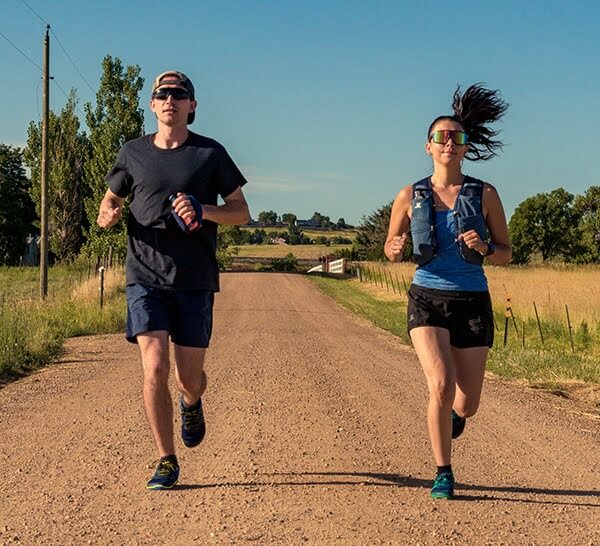
DO NOT “TRANSITION SLOWLY” TO BAREFOOT RUNNING
The more time you spend researching barefoot running and minimalist running — the more articles, interviews with doctors or runners, news stories, and research you dive into — the more you’ll hear one particular warning.Transition to barefoot running SLOWLY. If you make the transition too quickly, you’ll get hurt.Actually, if the piece supports running barefoot, you’ll hear this as a recommendation. If the piece is “anti-barefoot,” then it’ll be a warning.Why You Shouldn’t “Transition Slowly” to Barefoot RunningAdmittedly, even on this site I say something that could sound similar about how to start running barefoot.But to focus on how quickly or slowly you make the transition is to miss the point. Running barefoot safely and enjoyably isn’t about whether it takes you a day, a week, or a year to do so. It’s about HOW you make the transition, not HOW LONG it takes to make it.Transitioning safely to barefoot running (or running in minimalist footwear) is about form, not about seconds on the clock.7 Tips to Help You Smoothly Transition to Barefoot RunningFollow these rules for a safe and smooth transition to barefoot running: Go barefoot or wear a truly minimalist shoe Run on hard and smooth surfaces Your foot should land under your body Use less energy and effort Have your feet touch the ground as little as possible Pick up your cadence Have fun Let’s dive into each of these tips. 1. Go Straight to Barefoot (or Wear a TRULY Minimalist Shoe)It may seem logical that if you've been wearing a shoe with a lot of cushioning or a highly elevated heel, you would want to just slowly transition by starting with a shoe that has less cushioning and a lower heel… and then less and lower until you’re ready for running barefoot or in a barefoot-style shoe.In reality, transitioning to minimalist shoes by going slowly to thinner shoes is not the best way to learn to run barefoot or to run with proper, natural form. Dr. Irene Davis showed how “transition shoes” (which she called “partial minimalist”) can be worse for you than any other shoe, or being barefoot.Instead, you want to go straight to being actually barefoot, since that’ll give you the most feedback, and feedback is what helps you develop natural running form. If that seems too crazy, you can wear a truly minimalist, or “barefoot” shoe with a flat, flexible sole, no unnecessary cushioning, and a wider, foot-shaped toe box.Either way, the idea is to go as close to barefoot as you can and simply start SMALL and SLOW. More about that in a moment.2. Run on Hard and Smooth SurfacesIt also seems logical that you’d want to run on a cushioned surface, like grass.But, successful barefooters recommend running on a HARD, smooth surface… the reason is that you get more feedback from running on a nice road or bike path than you do from running on the grass. Plus, grass tends to be uneven, which could lead to tripping or ankle sprains, and there could be things hiding in the grass that you don’t want to step on… or in.If you want to see a barefoot runner get misty-eyed, show them a freshly painted white line on the side of the road. It's soft, it's smooth, it's cool, it's delightful :-)3. Your Foot Should Land Under Your Body When your foot touches the ground, it should be almost directly under your body. Don’t “overstride.” That is, don’t reach out in front of you with your foot in order to land. Many people who’ve been running in padded, motion-controlled shoes already overstride, reaching out with their heels and landing with an almost straight leg. Some people have heard that when running barefoot, you're supposed to land on your forefoot and will still overstride, but point their toes in order to land on their forefoot.Do not do this!Landing on your forefoot, with your foot out in front of your body puts extra stress on the forefoot and could lead to problems or injury. 4. Use Less Energy & EffortMany people think that when you start running barefoot, calf pain and Achilles pain are almost required. Trust me, 99 times out of 100 calf or Achilles pain comes from using too much effort. And, trust me again, you’re probably not the 1 out of 100 for whom it’s not.As you transition to barefoot running, focus on relaxing, using less energy and effort. For example, rather than pushing yourself off the ground with your foot/toes, try to lift your foot off the ground by flexing at the hip. Pushing off the ground uses WAY more calf muscle effort than is necessary. Similarly, if you think you have to stay on your toes and never let your heel touch the ground, which isn’t true, you’ll put more strain on your Achilles tendon than you need. You can let your heal naturally come to the ground instead.5. Touch the Ground as Little as PossibleWhen barefoot running, or running in truly minimalist shoes, try to focus on touching the ground as little as you can. Rather than “landing” on your feet, think of your feet as something that only touch the ground for as little time as necessary.One way to think about this is that when your feet touch the ground, have them moving at the speed you’re traveling across the ground. Another image that could help here: Your feet should contact the ground more like a wheel that just rolls over it, rather than like a stick that gets planted and pulled out.Another idea: Imagine lifting your foot off the ground before it even touches it. This could help you get your foot off the ground faster.Many other instructions you may find about how to run barefoot are just cues to help you get the correct foot placement and use less effort. 6. Pick Up Your CadenceCadence is the number of steps you take per minute.Picking up your cadence means taking slightly more steps per minute without running faster.There's a commonly held idea that when you run barefoot your cadence should be 180 steps per minute. 180 is not a magic number. Increasing your cadence (just a bit) makes it easier to place your feet under your body, at the correct speed, and with less effort. You can’t “plant” your feet, when they have no time to spend on the ground. You will want to experiment with different cadences that are slightly faster than what you're used to. Knowing that anything different from what you've been doing will initially feel unusual. And, yes, running with a metronome can help.7. Have Fun!You can spot a barefoot runner from 50 yards away. They look like they're having a good time. They're often smiling.So, perhaps the best instruction to help you transition to barefoot or minimalist running is to use fun as your guide. Listen to your body and HAVE FUN… And if you're not having fun, do something until you are.Besides, if you’re just grinding out the miles it’s almost guaranteed that you’ll fall into bad form and increase your chances of injury. How Long Does the Transition Take?The length of time it takes to learn to run in barefoot-style shoes or completely barefoot is different for everybody. For some, it takes no time at all because they already run in the way I described. For others, it takes longer, since they are learning a new skill and a new way to move — and different people learn at different rates. For a rough timeline, it should take anywhere from 1-4 months to fully transition to barefoot running.Effective and enjoyable barefoot running is an ongoing process. You will continue to improve the longer you do it. Taking the time to transition to barefoot running will be worth it in the long run. Focusing on the amount of time it takes you to make the change is putting your attention on the wrong thing. If you believe that it’s just about putting in the hours until you’re suddenly a successful barefoot runner, you may never make the form adjustments that will give you what you want.On the other hand, if you pay attention to the correct things, the important things – to your form, to relaxing more, to having fun – that could dramatically speed up your transition time. Pay attention to your sensations — if it hurts, take a look at the tips above and try something different until it doesn’t hurt. No pain, GAIN.Turn off the clock and turn on your awareness; you’ll have fun running barefoot (or wearing barefoot shoes) in no time.The content of this post does not constitute and is not intended to be a substitute for professional medical advice, diagnosis or treatment. Always seek the advice of a physician or other qualified health provider with any questions or concerns you may have about your health or a medical condition.
Why Barefoot Running?
While barefoot running isn't new, it's popularity has been going through the roof since Christopher McDougall's book, Born To Run, became popular in 2009.Ironically, Born To Run isn't really about barefoot running. It's about the Tarahumara Indians in the Copper Canyon of Mexico and how they're able to run pain-free and injury free for hundreds of miles, well into their 70s. It's about the first ever ultramarathon held in the Copper Canyon. It's about the fascinating characters around this race. And it's about Chris's exploration of safer, more enjoyable running.By the way, if you haven't read the book, you must. It's a great, exciting read, whether you're a runner or not. And, admittedly, I make fun of the fact that barefoot runners treat this book like the bible in my video, Sh*t Barefoot Runners Say and the follow-up, Sh*t Runners Say To Barefoot Runners.It happens that around the time the book was becoming popular, one of the people featured in the book published a study about barefoot running. That person is Dr. Daniel Lieberman from Harvard University and, in a nutshell, what Daniel showed was: Runners in shoes tend to land on their heels, essentially using the padding built into the shoes Landing in this manner sends a massive jolt of force (called an impact transient force spike) through the ankles, knees, hips, and into the spine Then... Runners who run barefoot tend to land on their forefoot or midfoot, with the landing point nearer to the body's center of mass (not out in front of the body, like shod runners) Barefoot runners use the natural shock-absorbing, spring-like mechanism of the muscles, ligaments and tendons within and around the foot, the ankle, the knee, and the hip. Barefoot runners do not create the impact transient force spike through their joints In short, running shoes could be the cause of the very injuries for which they're sold as cures!Take off your shoes and you're less likely to land in a biomechanically compromised manner.This seems to explain why people who run barefoot often report the elimination of injuries (that were caused by bad form that they no longer use) and, more importantly, that running is more fun!Now it's not all as simple as this.The shoe companies, realizing that barefoot was becoming a big deal, began selling "barefoot shoes"... most of which are no more barefoot than a pair of stilts.Even the Vibram Fivefingers, which look like bare feet, aren't necessarily as barefoot as they appear.The key to successful barefoot running seems to be the ability to use the nerves in your feet, to Feel The World. Basically, if you try to run barefoot the same way you do when you're in shoes, IT HURTS!Figure out how to do what doesn't hurt and you'll be running in a way that's more fun and less likely to cause injuries.Now, I know it's not as simple as that, and I'm the first to admit that the science supporting barefoot running isn't in yet. But, then again, there's no science that shows that running shoes are helpful.Think about this: people lived for millions of years without shoes, or without anything more than a pair of sandals like Xero Shoes or a pair of moccasins. Runners ran successfully up until the 1970s with shoes that had no padding, no pronation control, no orthotics, and no high-tech materials.The three parts of our body that have the most nerve endings are our hands, our mouths and our feet. There's only one of those that we regularly cover and make numb to the world... does that seem right?Put a limb in a cast and it comes out of the cast a month later atrophied and weaker. When you bind your feet in shoes that don't let your foot flex or feel the earth, isn't that similar to putting it in a cast (or as barefoot runners like to say, a "foot coffin")?There's a lot more on this site about what the benefits of barefoot running -- and walking, and hiking, and dancing, and playing -- may be. If you have any questions, ask them here, or on our Forum. Or follow us on Facebook, Twitter, Youtube, and Pinterest.Join the conversation. Join the conversion. Feel The World!
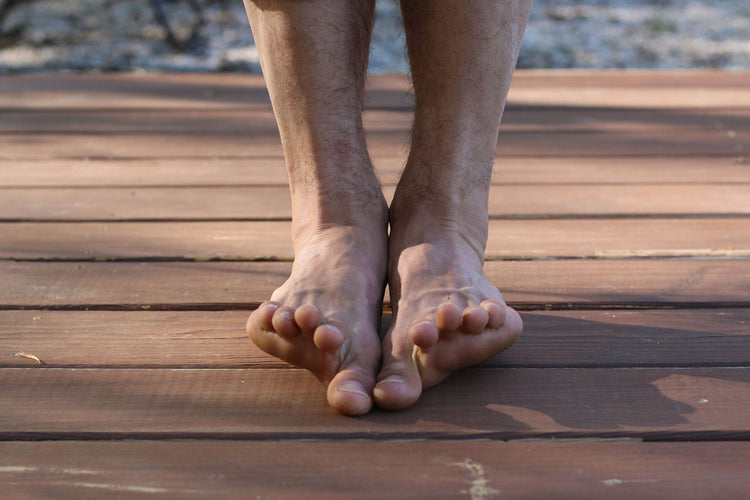
4 Exercises to Strengthen Your Feet
4 Exercises to Strengthen Your Feet (And Ankles) This article was recently updated on April 10, 2023 I’ve always been a fan of shoes as a fashion statement. However, when looking cool or sexy becomes the priority over feeling good, we have a problem. It is no secret nowadays that the health of our body directly affects how we think and feel. The last 10 years of my life have been dedicated to helping others feel good in their body and mind. When it comes to feeling good, I always start with the feet. Why Are Foot Strengthening Exercises Important? Many of us know how to stretch and strengthen our abs, chest, shoulders, thighs, and buttocks. But what about the feet and ankles? Feet are the foundation of our posture, but they are often ignored at the gym. You can improve your overall well-being by practicing a few main joint movements of the ankles and toes. Further down I will go over a few daily exercises to improve your health from the ground up. Your Feet Affect Everything When I teach yoga - especially my hip-focused workshops, I spend 20% of the time on the feet and ankles. The health of your feet directly affects all of the muscles and joints above, including the hips, knees, and lower back. "Supportive" Shoes Are Only A Quick Fix I always find it comical that modern medicine provides these solutions for your foot problems: Shove a sole into your shoe to lift your arches for you Find shoes that articulate your ankles for you while you walk Don't get me wrong, there is a time and place for these quick solutions. However, they are not a long-term solution that will make your feet stronger. Here is an analogy of what short-term solutions do to your body. Pretend that your body is a lazy employee at work, and your doctor is the manager. The manager can either: Teach us how to be productive and inspire us to take action Simply do the work for us and teach us nothing Firing the employee is not an option - you only have one body, after all! The best option, of course, is the one that is better for us in the long term. However, most of us don't actually take the time to support our overall well-being. If you're reading this, you probably aren't a "lazy" human being. You are looking for solutions and answers, and you are willing to do the work. This is why you have chosen to wear barefoot shoes from Xero Shoes, isn't it? You want to take care of your long-term foot health! So, let's get into building strength. How Can I Make My Foot Muscles Stronger? In order to get stronger feet, let's take a look at the four main actions of the ankle. Dorsiflexion Dorsiflexion is what we commonly refer to as flexing the feet. Stand on two feet and bend your knees, lean forward till your knees move forward. You’ll see the skin at the front of your ankle wrinkles, this action is called dorsiflexion of the ankle joint. Plantarflexion Plantarflexion is the exact opposite of dorsiflexion, and it is commonly known as pointing your foot as a ballet dancer would. Inversion Sit down with your legs out in front and turn the soles of your feet toward each other like you are making “prayer” feet. This is called inversion or inverting your ankle. Note, you may sit up on blankets or a couple of pillows if your hamstrings are on the tighter side. Eversion This is the opposite of inversion and is usually the most challenging. Stand up again, press the big toes down, and pull the outside edges of your feet up. You will see wrinkles form in the outer ankle, and you will feel the muscles along your outer shin engage. What Feet Strengthening Exercises Work? The following foot strength exercises will help to strengthen your muscles so you can perform the actions above: 1. Seated Plantar flexion Sit down with your legs in front. Plantar flex and relax your ankles repeatedly with straight knees. You are trying to activate your calf muscles. Keep your feet everted by squeezing the inner ankles together. If you need to, you can use a yoga strap to help with the range of motion. Try without the strap as well to build up your foot strength. 2. Seated Dorsiflexion This action is the opposite of the first exercise. Sit down with your legs in front and pull the tops of your feet back. Release and repeat three times or more until you feel the heat building in the top of the shins. These muscles are your tibialis anterior muscles. 3. Calf Raises Stand upright with your feet flat on the floor. Plantar Flex your ankles until your heels lift. Try not to let your ankles roll outward during these. The target muscles here are called the gastrocnemius and soleus muscles. To keep the ankles from rolling forward, you'll be using the muscles of the outer shins. 4. Inversion and Eversion Practice the inversion and eversion techniques described above. These exercises are the ABCs for your feet and ankles. Do them daily before getting out of bed to wake up all the muscles in your foot and ankle. Bonus: The Toes Take your foot exercises up a notch by spreading your toes. Also known as abduction, and you can do this either with a toe spreader or using your fingers to separate the toes. With time and repetition, you will be able to use your muscles to spread your toes. Until next time, Matt Giordano, aka @TheYogiMatt The information in this post does not take the place of medical advice. Only your doctor can provide advice, diagnosis, and treatment. Talk to your doctor or physical therapist if you have questions about your health.
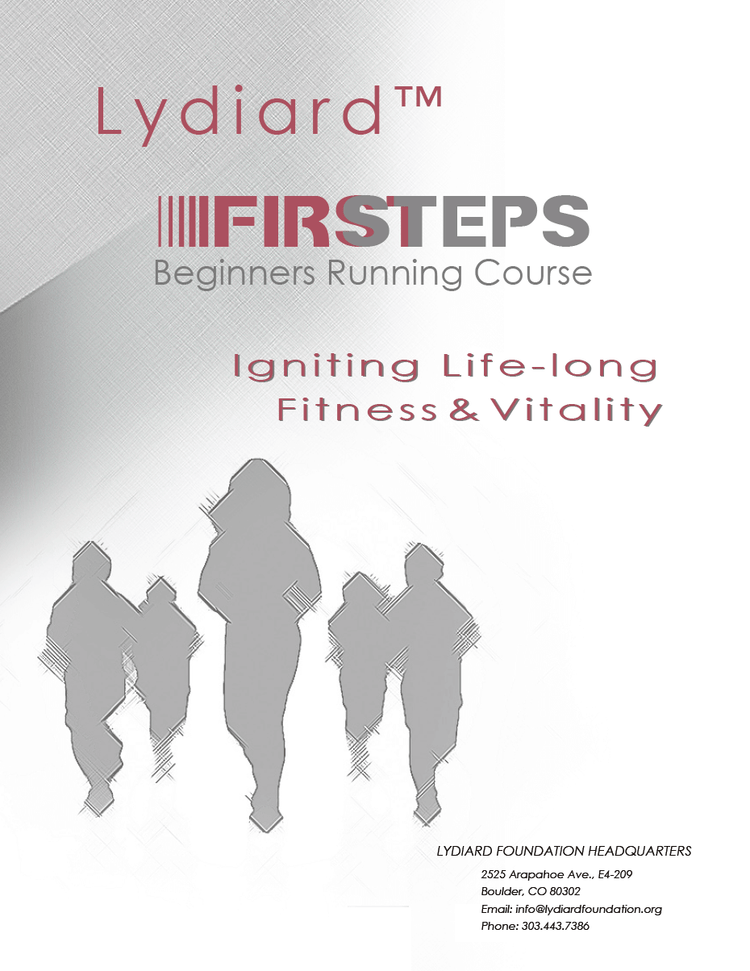
Lydiard Training Plan for Runners
Arthur Lydiard was one of the most accomplished running coaches of all time and his training methods revolutionized the sport.The Lydiard Foundation is carrying on Arthur's teachings, led by Lorraine Moller, a 4-time Olympian and Olympic bronze medalist in the marathon, and Nobby Hashizume.If you're looking for a distance running training program, the Lydiard method will serve you quite well. And thanks to Lorraine and Nobby, you can grab the Lydiard First Steps course right here.Then find out more about Lydiard training at www.xeroshoes.com/likes/lydiard.

Proper foot placement when running
If someone tells me they're having almost any problem or issue with natural running, the odds are well over 75% that the issue comes from "overstriding."Overstriding is when you land with your foot further out in front of your body than is necessary or ideal. Watch little kids run and they almost never do it. Not even when chased by ravenous chickens!See how the foot lands almost under the hips?Put modern running shoes on them, their gait will change, and they'll start to reach out with their leg, landing on the heel.Do this when you're barefoot and it HURTS.Do this in a barefoot-inspired or true-minimalist shoe, like Xero Shoes (both shoes and sandals), and you'll typically hear of three issues: Sliding off the sandal or into the thong of the huarache-style sandal -- this is because the sandal hits the ground and stops moving as your foot continues to move forward. Tightening the lace or webbing isn't a real solution. Slapping noises -- this comes from, well, slapping your foot onto the ground. When you land on your heel, your foot can't articulate properly and the forefoot comes down with extra force. If you land on your forefoot when you overstride, that can lead to stress fractures, but first it'll just be loud. See this article for some more info. Heel blisters -- landing with your foot in front of your body is like putting on the brakes with each step, and that horizontal deceleration creates friction, and friction leads to blisters. See How to Avoid a Barefoot Running Blister and see the first video at https://xeroshoes.com/barefoot-myths-lies-and-truth-free-video-series/ for more about this. If you land with your foot "under" your body (it may be slightly in front of your center of mass), all those issues go away. In fact, if you land that way, you can wear a sandal that's barely tied to your foot and it won't make any noise, nor will you slide off it and you won't get blisters. It'll be like you're running barefoot, but just before you land, someone throws a piece of rubber on the ground.Here's one of my favorite examples. In this video, the runner accelerates to full speed on a carpet that's over ICE... then runs for a few strides at full speed without any slipping.You'll have to pause the video and play with the slider to see how his feet are landing under his center of mass.What this highlights is that when you're running at a constant speed, especially at full speed, almost all of the force into the ground is vertical. Add more horizontal force, e.g. by overstriding, and your feet would slide right out from under you.Whattya' think? The content of this post does not constitute and is not intended to be a substitute for professional medical advice, diagnosis or treatment. Always seek the advice of a physician or other qualified health provider with any questions or concerns you may have about your health or a medical condition.
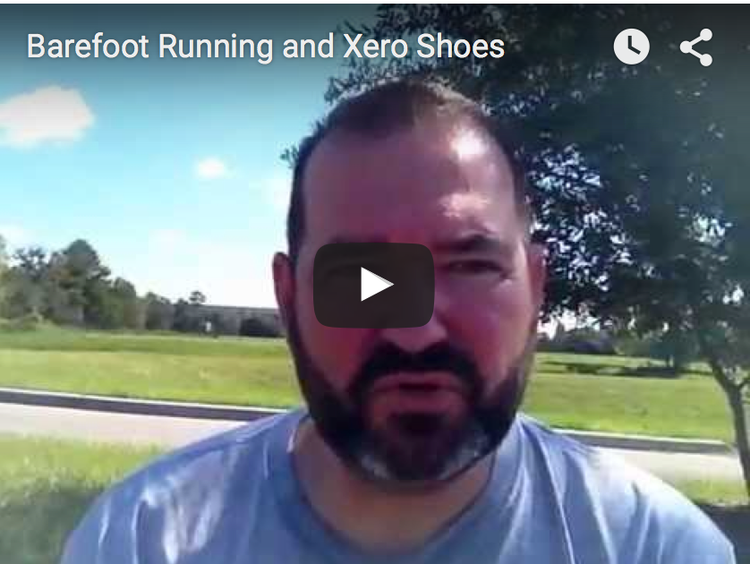
From "broken" to barefoot to Xero. Greg Makuch's amazing story
Greg Makuch's story is one that EVERY runner -- barefoot or shod -- should hear. I won't say any more until you watch it, below. What I LOVE about Greg's story is how he brought a sense of wonder and curiosity to his journey. "I'll never run again... really?" "These sandals make noise... wait, if I'm running uphill they're silent so...?" Greg listened to the feedback from his body and his Xero Shoes and became his own best coach. Don't overlook how seeing himself on video was such a turning point. It's amazing to me how often we're doing something with our body that's VERY different than what we think we're doing. And, while Greg's is a story about running... do remember that you don't have to run to enjoy Xero Shoes ;-) In fact, most of our customers do just about everything but run in their Xeros -- walk, hike, paddle, play, chill. You name it. Feel the Freedom. Feel the Fun. Feel The World with Xero Shoes.
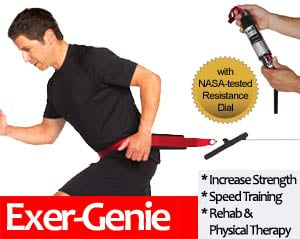
Run faster and stronger with the Exer-Genie
I know, I know... "Exer-genie" sounds like the name of a fitness gadget that women in the 1950's would have used.But don't let the name fool you. This is one serious piece of equipment, all rolled up into a tiny, travel-friendly, package that anyone of any fitness level can use to get stronger and faster.The Exer-Genie has been used by Olympians and professional sports teams for decades. And, frankly, given what a gadget geek that I am (especially fitness gadgets), I can't believe that I only recently discovered it.Let me show you a quick video of how my training partner, World-champion sprinter Cathy Nicoletti, and I now use the Exer-Genie as part of our sprinting training.In short: we'll do resisted runs with enough resistance to slow us down no more than 10%, usually increasing the resistance with each run, and then finish with a non-resisted run.We're planning to integrate more heavy-resistance running (for improved drive phase performance), as well as resisted walking lunges and bounding. Sometimes we'll use the Exer-Genie at the end of a speed workout. Other times we do an entire workout with the Exer-Genie.There are essentially 2 models of the ExerGenie that you'll be interested in: The Classic system with a shorter rope for strength training (you can practically replace a gym's worth equipment with this), or the long-rope Speed system for doing resisted running (and jumping, bounding, lunging, etc.). If you're into suspension training, like with a TRX, you'll want to look at the Dynamic Life system as well... a variation of the short rope system.The folks at ExerGenie are INCREDIBLY helpful and committed to your fitness. If you have any questions, just give them a call (number is at the website). Tell 'em we said Hi! Find out more about the Exer-Genie here.The content of this post does not constitute and is not intended to be a substitute for professional medical advice, diagnosis or treatment. Always seek the advice of a physician or other qualified health provider with any questions or concerns you may have about your health or a medical condition.
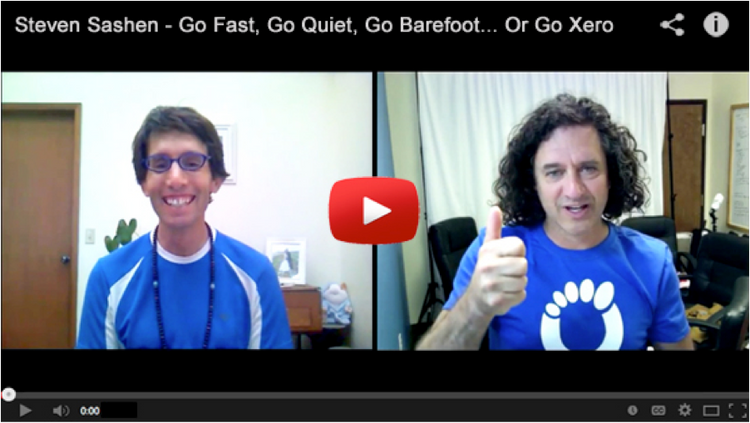
Mindful Running with Michael Sandler
Some readers may know that Michael Sandler is one of the reasons Xero Shoes exists.Back in the Summer of 2009 he said, "You know, if you treated this hobby of making barefoot sandals like a business -- and built a website -- I'd put you in a book that I'm writing called Barefoot Running."To make a long story short, 24 hours later I had a website ;-)Well, Michael has a new program called "The Mindful Running Program" and he interviewed me for it.Some of what we talked about: Using "mental rehearsal" (not visualization) to prepare for races How barefoot running can become instant meditation The 4 "neurological types" of barefoot runners, and what each one needs in order to improve And, then, on a personal note:What happens in my mind when I'm running a 100m, or when I was competing as an All-American gymnast... or when I was captured and shot at in Tienanmen Square in 1989!Click here to check out the interview, and leave a comment after you hear it.

